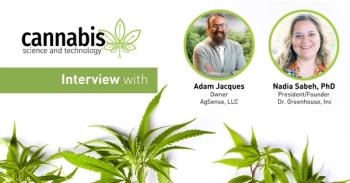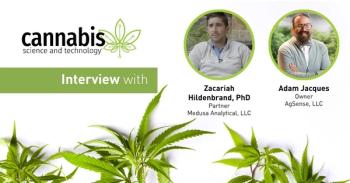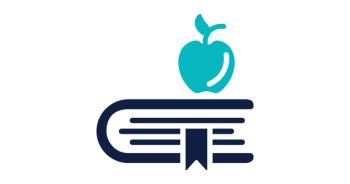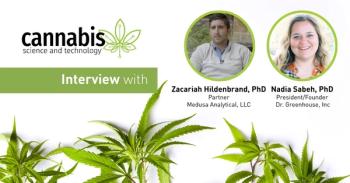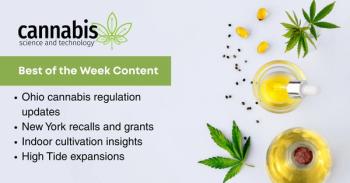
Cannabis Science and Technology
- July/August 2020
- Volume 3
- Issue 6
A Proposed Representative Sampling Plan for Hemp Grows

Here a scientifically based representative sampling plan for hemp grows is presented, detailing how to collect composite samples, how many to collect, and how to analyze them.
Hemp is a naturally variable, inhomogeneous material. Analyzing one or a few cuttings from a grow will not give data representative of a field. Here I propose a scientifically based representative sampling plan for hemp grows detailing how to collect composite samples, how many to collect, and how to analyze them. I want this industry to commit itself to the goal of analyzing one plant per 1000. Technologies available to handle the resultant increased sample load are reviewed.
With passage of the 2018 Farm Bill and promulgation of the United States Department of Agriculture’s (USDA) interim final rule in October 2019, it is now legal to grow hemp provided the total tetrahydrocannabinol (THC) level in dried plant material does not exceed 0.3% dry weight (1–3). To enforce this law, extensive testing of hemp crops is being performed around the country by state departments of agriculture. The USDA has issued a sampling guidelines document (3). The USDA sampling document defines a “lot” of hemp plants as a (3) “…contiguous area in a field, greenhouse, or indoor growing structure containing the same variety or strain of cannabis throughout.”
My concerns with this sampling plan are noted below, along with my proposal for an improved hemp representative sampling plan. First however, we must address the topic of sampling error, something a good representative sampling plan tries to minimize.
Introduction to Sampling Error
The entirety of anything that we wish to sample, be it all the people in the US or all the plants in a hemp grow, is called a population (4). In a perfect world, we would measure the quantity of interest in the entire population. For example, asking the opinion of everyone in the US for a poll, or analyzing every hemp plant in a field. However, this is impractical given the enormity of the task. Instead, we choose a subset of the population from which to collect data, for example, we could choose to ask 1000 Americans their opinion for a poll or choose to analyze one plant per 1000 in a hemp grow. Sampling error rears its ugly head because there is always a chance the population subset we choose to analyze will not give us the same result as if we had analyzed the entire population.
Sampling error is different from the random error discussed in a previous column (5). Random error is caused by things we have no control over such as instrumental and environmental fluctuations. Random error is minimized by more and better testing (5). When testing a hemp field then for cannabinoid content, the amount of error in the final measurement is a combination of random error and sampling error (assuming systematic error is zero [5]).
I am not a statistician but a chemist, so I refer you to these references if you desire a detailed mathematical treatment of margin of error and population subset size (6,7). However, everything I have read on the subject points to the same conclusion: the way to minimize sampling error is to maximize the size of the population subset that is analyzed. Intuitively this hopefully makes sense. There are more than 300 million people in the United States. When running an opinion poll, the more people you talk to the better the chances you will gather data that is representative of the nation. When it comes to hemp fields, when taking one or a few cuttings there is a high chance that the plants sampled are not representative of an entire grow. The way around this is to analyze as many hemp plants in a field as is practicable.
The limiting factor in performing representative sampling for hemp field testing is time and expense. Therefore, we must find a happy medium between minimizing sampling error while not generating an inordinate number of samples for testing. I believe the best compromise here is achieved if we test one hemp plant per 1000 in a field. I want our industry to commit itself to this testing goal.
The Current State of Hemp Sampling Plans
The USDA hemp sampling document (3) presents equations for calculating the minimum number of cuttings to collect in a lot. Example calculations are given and are summarized in tables showing the minimum number of cuttings to collect based on the acreage of hemp plants. In the examples given, one cutting per acre or less is collected per lot. The document calls for compositing all cuttings into a single sample. Typically, one aliquot of this composite sample is tested (8–10).
The following sections summarize my concerns about this approach.
Tacit Assumptions
The calculations for the minimum number of cuttings to collect are based on this assumption (3): “…the proportion of hemp plants having THC content greater than the acceptable hemp THC level…are based on past experience in the same or similar growing areas.”
The example calculations assume the proportion of hot hemp plants is 0.01 (3).
One problem with this assumption is that in some areas of the country hemp is being planted for the first time this year, so the needed historical data does not exist. Additionally, since it only became legal nationwide to plant hemp as of January 2019 (1), there is little historical data for the rest of the country upon which to base an assumption of the proportion of hot plants. Lastly, even if we had enough historical data, given the vicissitudes of the weather, every growing season is going to be different in every area. Absent any peer-reviewed data to the contrary, I do not believe it is safe to assume that any given growing season will be predictive of any future growing season. Rather than basing a sampling scheme assuming we know the proportion of hot plants, would it not make more sense to measure that proportion of hot plants instead?
Population Size Matters
My concern here is that, on average, the USDA sampling document calls for collecting one cutting per acre or less (3). The problem is that hemp farmers plant at different densities. For example, Farmer x may grow 2000 plants/acre, while Farmer y may grow 4000 plants/acre. Remember that the population being sampled is the hemp plants, not the area of the field they occupy. Basing the number of samples to collect based on acreage is like choosing the number of people to include in an opinion poll based on a state’s area. Using this logic, you would talk to more people in Alaska rather than New Jersey for a poll, even though New Jersey has 12 times as many people as Alaska (11).
Our goal should be to achieve the same level of sampling error for all lots analyzed. To do this, the number of samples to collect needs to be determined by the number of plants in a plot, not their acreage. In our examples then, and following the goal of sampling one plant per 1000, Farmer x’s plot should be sampled at a rate of 2 plants/acre, while Farmer y’s plot should be sampled at a rate of 4 plants/acre. Only by basing the sample size on the number of plants in a plot can we assure the best representative sample is obtained.
Location, Location, Location
Where on the plant should we collect cuttings? The USDA sampling document states that cuttings are to be taken from the top 1/3 of the plant (3). Work by myself and others has clearly shown that cuttings from the same hemp plant vary in cannabinoid content (12) as seen in Figure 1 (click to enlarge).
The top of a hemp plant normally has the highest cannabinoid content, and hence only collecting plant tops means a sample will be collected that will be biased towards containing more THC than the field in general. This makes it more likely that its total THC content will be above 0.3% and that the farmer will lose his crop.
Ultimately, I believe that the plant parts sampled need to reflect how the crop will be harvested. For smokable hemp, the buds are the article of commerce, which means that harvesting the top 1/3 of the plant may be appropriate for this type of harvest. However, when growing hemp for extraction, the entire plant may be ground up and utilized. In this case cuttings from the top, middle, and bottom would be appropriate.
Composite Samples Are Not Necessarily Uniform
The USDA’s sampling document calls for compositing all the cuttings from a lot into one sample (3).
There are two problems with this. First, the regulations assume that every composite sample is homogeneous. Where is the peer-reviewed science on this? A simple visual inspection of ground hemp samples will show they are not uniform. In my own experience, I have found that composite samples are not uniform. I have taken composite hemp samples and had their cannabinoid content measured in triplicate at an ISO licensed, state certified laboratory (13). I found cannabinoid concentration variation across the samples well above the margin of error as reported by the laboratory, which means these composite samples were not homogeneous, and that sampling error exists for composite samples.
The second problem with composite samples is only testing them once. This assumes the sample is uniform. Wouldn’t it be better to test multiple aliquots and reduce the sampling error rather than only testing one aliquot and assuming the sampling error is zero? When it comes to science, I strongly feel that actual measurements are always better than assumptions. At minimum three aliquots of composite samples should be tested and an average and a standard deviation calculated to get a handle on the sampling error.
Consistency Matters
Another concern I have is that different states are sampling in different ways (8-10). Some states only collect a specific number of cuttings regardless of grow size. Some states are using sampling based on acreage and not number of plants. Some states give specific details on how to walk a field and collect samples, but there is no agreement on what pattern to walk. Lastly, some states are testing using liquid chromatography (8,9), while others are using gas chromatography (10). Until there is nationwide standardization on how to collect and analyze hemp samples, different states will obtain different results on the same samples.
A Proposed Hemp Representative Sampling Plan
Patricia Atkins and I have written in this journal on the importance of representative sampling in cannabis testing (14,15). I offer here my representative sampling proposal for hemp. This proposed plan does not necessarily conform with regulations promulgated by the USDA or any state’s department of agriculture. My proposal is based on my understanding of statistics, my 30+ years experience in chemical analysis, and my PhD in physical chemistry.
The gist is this. Rather than assuming we know the proportion of hot plants, why not use statistical sampling techniques to generate enough data to get an excellent estimate of the average total THC value for a hemp lot? Rather than only collecting one composite sample per lot, assuming that sample is uniform, and then only testing it once, why not collect multiple composite samples from a lot, test each of them multiple times, and maximize the amount of data we have on a lot minimizing the sampling error?
How Many Samples Should Be Collected?
The number of samples to collect from any given lot needs to be based on the number of plants in that lot as the plants are the population we are testing and care about. I want our industry to commit itself to sampling one hemp plant per 1000 planted.
How Do You Choose Sampling Locations?
My own instinct on this is that sampling locations should be chosen randomly. This is to make sure that location does not bias the sample. For our 10,000 plant example plot this means 10 locations should be chosen at random. However, there is work indicating that collecting samples according to a pattern is a good idea as well (15). I am persuadable on what might be the best approach here.
What Parts of the Plant Should Be Sampled?
Research has shown that the cannabinoid content from different parts of the same plant varies appreciably (Figure 1). As stated above, the portion of the plant tested should correspond to how the plant will be harvested. If only plant tops are to be harvested, then only plant tops should be tested. If the entire plant is to be harvested then cuttings from the top, middle, and bottom of plants should be collected and tested.
How Many Plants per Sampling Location?
Since cannabinoid content varies from plant to plant, taking a cutting from only one plant at a given location might not be representative of that spot. To overcome this problem, cuttings from three plants at a given location should be collected to obtain a more representative sample. If harvesting just plant tops, the upper 1/3 of nine plants from a given location should be sampled. If harvesting the entire plant, then a cutting from the top, middle, and bottom on each of three plants for nine cuttings total should be collected. The cuttings from a given location should be combined to comprise a composite sample representative of that spot. For a 10,000 plant hemp lot then, 10 composite samples should be collected from 10 locations.
Sample Preparation
The law clearly states that dried hemp is the material to be tested. In my own work I dry hemp cuttings at 140 °F in a standard food dehydrator overnight. This gets the material down to about 5% moisture. I grind about 5 g of dried cuttings in a coffee grinder for 1 min to homogenize the sample. There are other ways of drying and grinding hemp. I welcome input on this. The most important thing is that we, as an industry, standardize how we prepare hemp samples for analysis (16).
How Many Aliquots of Each Sample Should Be Tested?
The problem with compositing all the cuttings from a lot and testing only one aliquot were discussed above. At minimum, any composite sample should be tested three times and the results averaged to obtain a more representative picture of the composite. Using our example then, each of the 10 composite samples should be tested three times for a total of 30 data points.
Analyzing and Reporting the Data
For a given hemp lot, the average total THC value for a lot should be calculated. For our example hemp plot, this would mean calculating the average of 30 values. The standard deviation (17) of these values should be calculated as well. This number is a measure of the variance in the data, and it is important because it takes into account sampling error.
The “acceptable hemp THC level” as defined by the USDA is calculated by adding the margin of error for total THC for a given method to 0.3 wt. % total THC (2). For example, if the margin of error is 0.04 wt. % for an analyzer (18), the acceptable hemp THC level for this analyzer would be 0.34%. If the average total THC value for a given lot is within a 95% confidence interval (17) of the acceptable hemp THC level for an analyzer, it should be considered legal. For hemp with total THC values above this level it should be considered illegal.
How Often Should You Analyze Your Grow?
For compliance purposes the law states that a hemp grow should be sampled within 15 days of harvest (1,2). However, for the purposes of managing a hemp grow to maintain compliance, I recommend farmers sample and test their crops more often. One approach is to begin testing about halfway through the growing season, and to test a lot once per week. I highly recommend tracking your results over time to spot trends. As harvest approaches, sampling a couple of times a week is a good idea.
How Do We Handle the Sample Load?
For our 10,000 plant plot, I recommended collecting 10 composite samples and performing 30 analyses total. Sending these samples out to a third party laboratory is not practical because it can take weeks to get results and may cost thousands of dollars to analyze one weeks’ worth of samples. This means that hemp farmers need to perform their own testing to manage their grows to maintain compliance.
In a previous column, I compared different technologies for cannabis potency testing (19) using the criteria of speed, accuracy, cost, and the ability to perform representative sampling. By necessity, any technique that is going to be used for representative sampling must be fast, easy, and inexpensive to make handling the representative sampling analysis load feasible.
I showed (19) that chromatography can accurately analyze a given sample but it is slow and expensive to use. As a result, it is not amenable to representative sampling. Another problem with chromatography is its difficulty of use, which is why some states require degreed scientists to run these instruments (19). I believe these problems with chromatography are why we are not performing proper representative sampling in this industry.
Spectroscopy is fast and inexpensive, but because it is a secondary technique it is not necessarily as accurate as chromatography (20). There exist spectroscopic analyzers capable of an accuracy or ±0.04 wt.% accuracy for the determination of total THC in dried, ground hemp (18). Since this is several times lower than the legal total THC limit of 0.3%, these analyzers are of sufficient accuracy to measure total THC in hemp. This technology is fast enough, inexpensive enough, and accurate enough to handle the sample load required to allow true representative sampling of hemp lots for farmers and regulators.
For state departments of agriculture, I recommend a two-tier approach to efficiently handle the sample load necessitated by proper representative sampling. Infrared spectroscopy could be used as an initial screen of samples. If a lot tests as being legal that is the end of it. If a lot tests hot, samples should be subsequently tested by chromatography to confirm the analysis. The advantage of this approach means that time and money are not wasted analyzing legal samples by chromatography.
Conclusions
There is natural variability amongst hemp plants, hence their grows need to be sampled in a representative manner. There are issues with how hemp fields are currently sampled. Here I propose that one plant per every 1000 should be analyzed. This is a reasonable compromise between minimizing sampling error and not generating an overwhelming number of samples to test. How to collect, prepare, analyze the samples, and report the data was discussed. Technologies available to handle the increased sample load resulting from representative sampling were covered.
References
- 115th United States Congress, Senate Bill S.2667,” Hemp Farming Act of 2018.
https://www.federalregister.gov/documents/2019/10/31/2019-23749/establishment-of-a-domestic-hemp-production-program .https://www.ams.usda.gov/sites/default/files/media/SamplingGuidelinesforHemp.pdf .https://en.wikipedia.org/wiki/Population .- B.C. Smith, Cannabis Science and Technology 1(4), 12–16 (2018).
https://en.wikipedia.org/wiki/Sampling_error .https://en.wikipedia.org/wiki/Sample_size_determination .https://agriculture.delaware.gov/plant-industries/hemp-program .- Massachusetts State Hemp Plane, Massachusetts Department of Agricultural Resources, Submitted to USDA March 9, 2020.
- Kentucky Department of Agriculture Standard Operating Procedure KDA-HEMP-20190204-1, issued Feb. 4, 2019.
https://en.wikipedia.org/wiki/List_of_states_and_territories_of_the_United_States_by_population .- M. Giese, M. Lewis, L. Giese, and K. Smith, J. AOAC Intl. 98, 1503 (2015).
www.sclabs.com .- B.C. Smith, Cannabis Science and Technology 2(1), 14–19 (2019).
- P. Atkins, Cannabis Science and Technology 2(2), 26-34 (2019).
- B.C. Smith, Cannabis Science and Technology 3(2), 10–15 (2020).
https://en.wikipedia.org/wiki/Confidence_interval .- B.C. Smith, Cannabis Science and Technology 2(6), 28–33 (2019).
- B.C. Smith, Cannabis Science and Technology 2(6), 10-14 (2019).
- California Bureau of Cannabis Control Regulations, Section 5719.
ABOUT THE COLUMNIST
BRIAN C. SMITH, PHD, is Founder, CEO, and Chief Technical Officer of Big Sur Scientific. He is the inventor of the BSS series of patented mid-infrared based cannabis analyzers. Dr. Smith has done pioneering research and published numerous peer-reviewed papers on the application of mid-infrared spectroscopy to cannabis analysis, and sits on the editorial board of Cannabis Science and Technology. He has worked as a lab director for a cannabis extractor, as an analytical chemist for Waters Associates and PerkinElmer, and as an analytical instrument salesperson. He has more than 30 years of experience in chemical analysis and has written three books on the subject. Dr. Smith earned his PhD on physical chemistry from Dartmouth College.
How to Cite this Article
B.C. Smith, Cannabis Science and Technology 3(6), 10-13 (2020).
Articles in this issue
about 5 years ago
Exploring the Chemical Makeup of Cannabis Extract by Methodabout 5 years ago
The First Family of Cannabinoid Medicine: The Knox Docsabout 5 years ago
Distinguishing Hemp from Marijuana by Mid-Infrared Spectroscopyabout 5 years ago
America’s Heartland Tackles Hemp Cultivation with Educationabout 5 years ago
From the Editor: Behind Our RedesignNewsletter
Unlock the latest breakthroughs in cannabis science—subscribe now to get expert insights, research, and industry updates delivered to your inbox.

